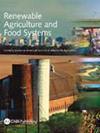反过来说:植物入侵者的效用
IF 2
3区 农林科学
Q2 AGRICULTURE, MULTIDISCIPLINARY
引用次数: 2
摘要
摘要入侵物种控制管理涉及大量的植物材料。本工作评估了入侵物种欧洲Ulex europaeus L.(Fabacee)或“Gorse”的化感潜力及其作为生物除草剂的可能用途,利用控制措施后提取的植物材料,特别是在入侵地区需要的植物材料。具体而言,我们研究了欧洲猪笼草干燥植物材料对不定植多花Lolium multiflorum Lam的控制效果。和刚果Lolium rigidum Gaud。,以Avena sativa L.作物为例进行研究。我们只使用营养植物部分,因为它的使用对避免欧洲锥虫的传播至关重要,尤其是在入侵地区。采用活性炭进行温室盆栽试验。将目标物种(L.multiflorum、L.rigidum和A.sativa)置于有机基质与欧防风覆盖物的混合物中,覆盖物在羽化前施用,随后施用覆盖物的水提取物。测定了目标物种的出苗率、高度和生物量。2个月后,我们还测试了基质对目标物种发芽的可能遗留影响。我们注意到,覆盖物对硬叶L.rigidum的出现有负面影响,这可归因于覆盖物释放的化感化合物,因为在AC存在的情况下,这种影响并不显著。相反,覆盖物处理对多花L.multiflorum或a.sativa没有影响。尽管如此,U.europaeus覆盖物及其提取物的组合对作物物种a.sativa的生物量具有植物毒性作用,对杂草L.multiflorum和L.rigidum具有施肥作用,这就是为什么不鼓励使用这种方法的原因。根据我们的研究结果,我们不能建议在燕麦作物中使用欧洲刺桐作为生物除草剂,但这项研究强调了欧洲刺桐通过其组织的化学和生物特性来构建植物群落的能力,从而改变土壤环境。本文章由计算机程序翻译,如有差异,请以英文原文为准。
The other way around: the utility of a plant invader
Abstract Invasive species control management involves a large amount of plant material. The present work evaluated the allelopathic potential of the invasive species Ulex europaeus L. (Fabaceae) or ‘Gorse’ and its possible use as a bioherbicide, taking advantage of the extracted plant material after control measures, particularly needed in invaded areas. Specifically, we investigated the efficacy of dried plant material from U. europaeus in the control of the adventitious plants, Lolium multiflorum Lam. and Lolium rigidum Gaud., using the Avena sativa L. crop as a case study. We only used vegetative plant parts because it is essential to avoid the dispersion of U. europaeus with its use, especially in invaded areas. A greenhouse pot experiment was conducted, using activated carbon (AC). The target species (L. multiflorum, L. rigidum and A. sativa) were subjected to a mixture of organic substrate with U. europaeus mulch applied pre-emergence and a subsequent application of aqueous extracts from the mulch. Emergence, height and biomass of the target species were determined. After 2 months, we also tested a possible legacy effect of the substrate on the germination of the target species. We noticed a negative effect of U. europaeus mulch on the emergence of L. rigidum, which can be attributable to the allelopathic compounds released from U. europaeus mulch because the effect was non-significant in presence of AC. Conversely, no effect on L. multiflorum or A. sativa was produced by mulch treatments. Nevertheless, the combination of U. europaeus mulch and its extracts demonstrated a phytotoxic effect on the biomass of the crop species A. sativa, and a fertilizing effect on the weeds L. multiflorum and L. rigidum, which is why this use is discouraged. With our results we cannot recommend the use of U. europaeus as a bioherbicide in oat crops, but this study emphasizes the capability of U. europaeus to structure plant communities through the chemic- and bio-properties of its tissues that modifies the soil environment.
求助全文
通过发布文献求助,成功后即可免费获取论文全文。
去求助
来源期刊

Renewable Agriculture and Food Systems
农林科学-农业综合
CiteScore
5.20
自引率
7.40%
发文量
39
审稿时长
>36 weeks
期刊介绍:
Renewable Agriculture and Food Systems (formerly American Journal of Alternative Agriculture) is a multi-disciplinary journal which focuses on the science that underpins economically, environmentally, and socially sustainable approaches to agriculture and food production. The journal publishes original research and review articles on the economic, ecological, and environmental impacts of agriculture; the effective use of renewable resources and biodiversity in agro-ecosystems; and the technological and sociological implications of sustainable food systems. It also contains a discussion forum, which presents lively discussions on new and provocative topics.
 求助内容:
求助内容: 应助结果提醒方式:
应助结果提醒方式:


